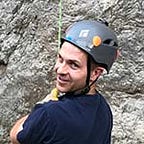Leave No Trace Principles: Learn Them And Live Them — Principle 1
*Adventure School participates in the Amazon Services LLC Associates Program, an affiliate advertising program for sites to earn advertising fees by advertising and linking to amazon.com*
This is the first in a series of posts I’ll be writing on the leave no trace principles. I know it’s not the most exciting topic for many, but preserving our natural playgrounds is critically important to all of us who love the outdoors. So read on and learn to love and live the leave no trace principles.
Principle 1: Plan Ahead and Prepare
1. Research the location: Each location you visit is unique and will have different regulations, climate, fauna and flora, or circumstances that may require different preparation, skills, or equipment. Lack of preparation here can lead to making bad decisions that unknowingly impact the locale. Not knowing about cryptobiotic soil may lead you to stomp out decades of growth. Illegally using a site may get the site permanently closed for other users if private property owners get sick of trespassers.
Bottom line here is know what you’ll encounter so you can make good choices. Do this by reading trip reports or field books on your destination.
2. Prepare for the worst: Prepare ahead of time for whatever weather, hazards, or emergencies you may encounter on your trip. Avalanche danger? You’ll need the skills and gear to be ready for one. High chance of rain? Bring your rain gear. Did someone sprain their ankle? Do you have first aid gear?
Failure to prepare for disasters means when they happen you have to act in extreme ways.
A quick story here. One time I was backpacking in a wilderness area and the whole group came down with cryptosporidiosis. We brought it with us. We were miserable and despite having some basic medicine, we didn’t have enough clean water. We got dehydrated so I started a fire (in a prohibited area). I was hoping to attract a ranger to help us off the mountain, but nobody showed up.
The moral of the story is that my failure to be fully prepared led to making decisions that negatively impacted the wilderness for the next groups. Prepare for the worst and expect the best.
3. Avoid peak season: Nobody wants to wait in lines in the wilderness. Memorial Day weekend is not the time to visit the nearest picnic area. Drive a bit further to a lesser-traveled spot and save the close ones for off-season use. Some places have a permit system or access limits to prevent huge crowds from forming. These places are okay — if you can get in.
4. Keep group size small: Regardless of when you visit a place. Keep your group as small as you can. Most wilderness areas don’t accommodate groups larger than 6 or so people at a time. The risk here is that a single campground won’t fit enough tents so new tent spots will be made or other impacts from larger groups. If you plan to take a larger group, consider splitting up into multiple smaller sub-groups so you can leave no trace.
5. Don’t bring extra trash: Why take more junk with you than you need? That’s exactly what you’re doing when you pack the box the oatmeal packets come in or even the box the cereal comes in. It’s already in a bag. Ditch any excess packaging before you go. Repackage things in ziplock bags if you can so you don’t have to pack out more trash. You’ll also be less likely to leave trash behind if you don’t bring it in the first place.
6. Navigate wisely: Cairns, marking paint, blazes, or trail flags don’t occur naturally, so why do we use them so often? If we learn the skills to navigate with a map and compass and use a map and compass to eliminate the use of marking paint, rock cairns, or flagging.
Hopefully, these ideas will help you lessen your impact on your next outing. Comment below if you have leave no trace experiences — good or bad — with how preparing ahead has helped reduce your impact on the land.
Stay tuned for the next leave no trace principle and more ideas on how to be a better steward of the land.
Originally published at https://myadventureschool.com.
